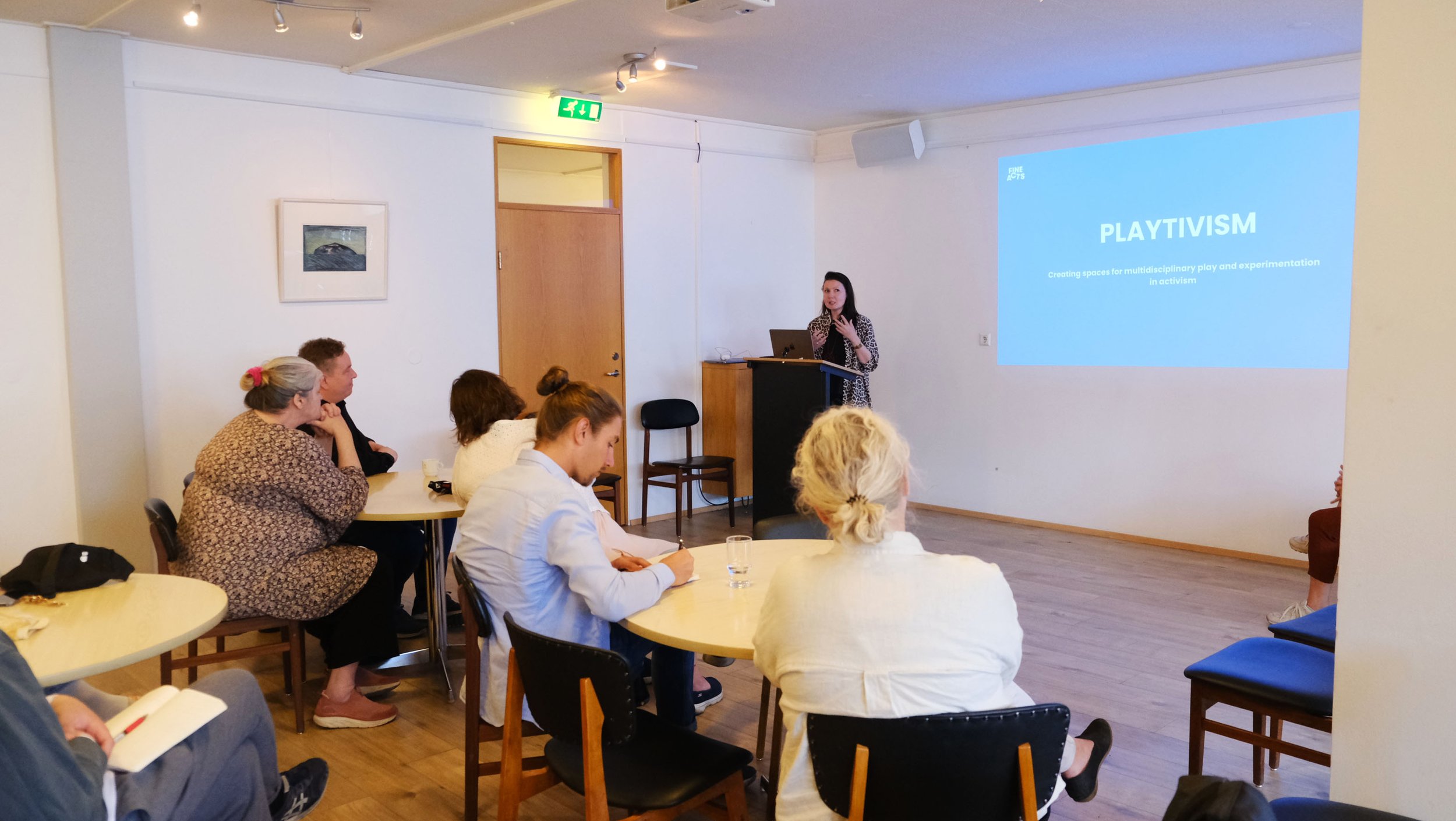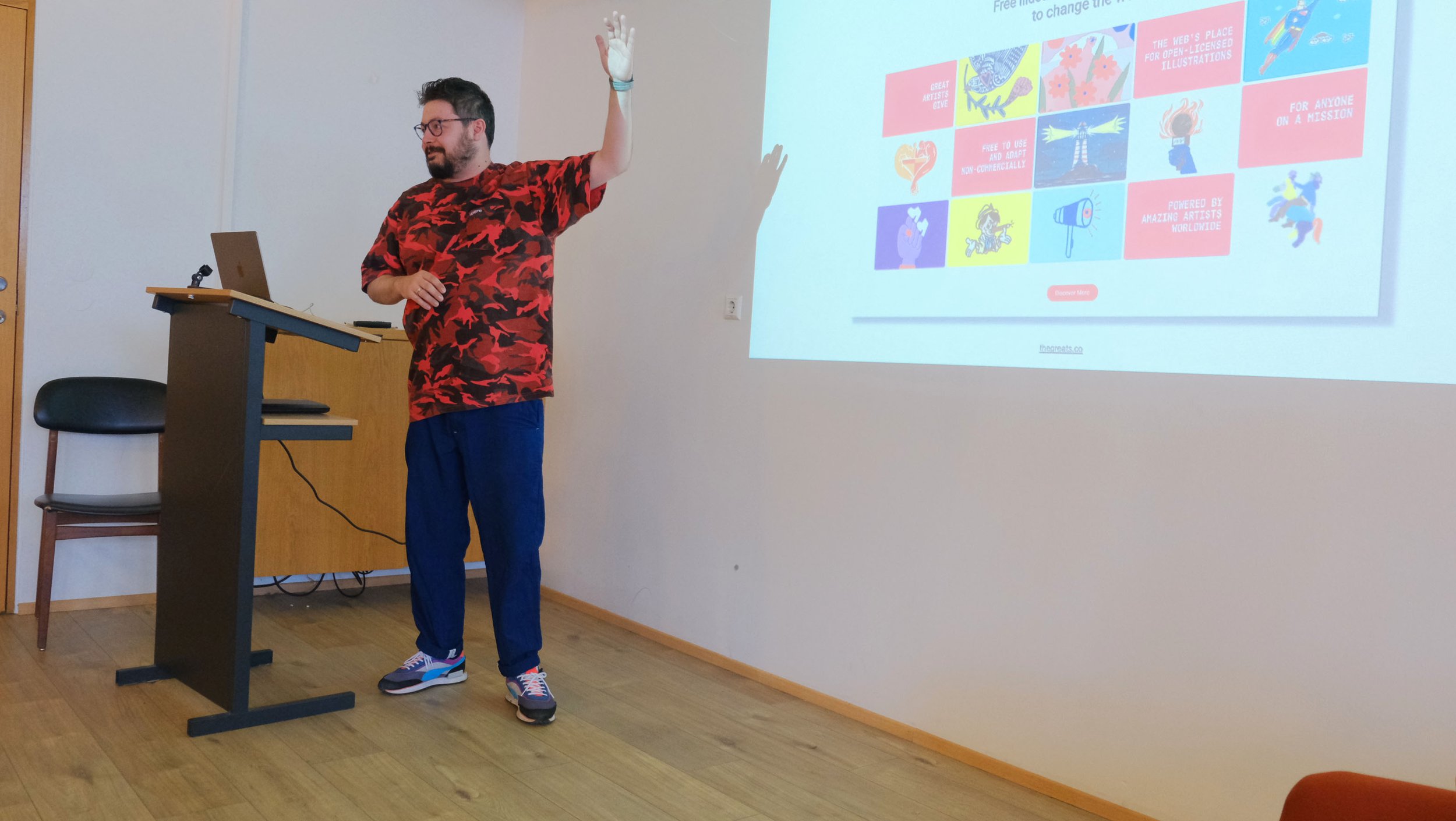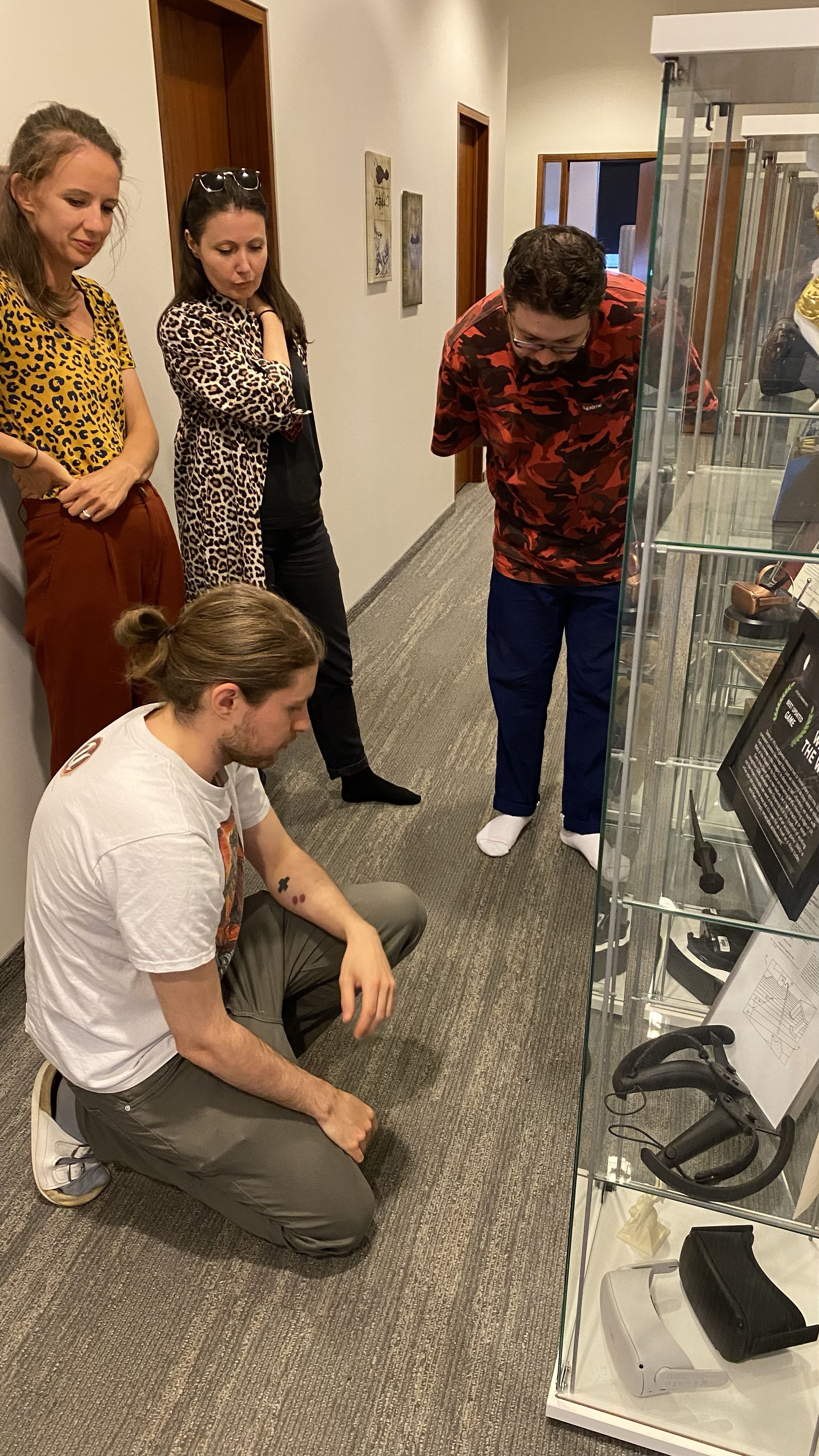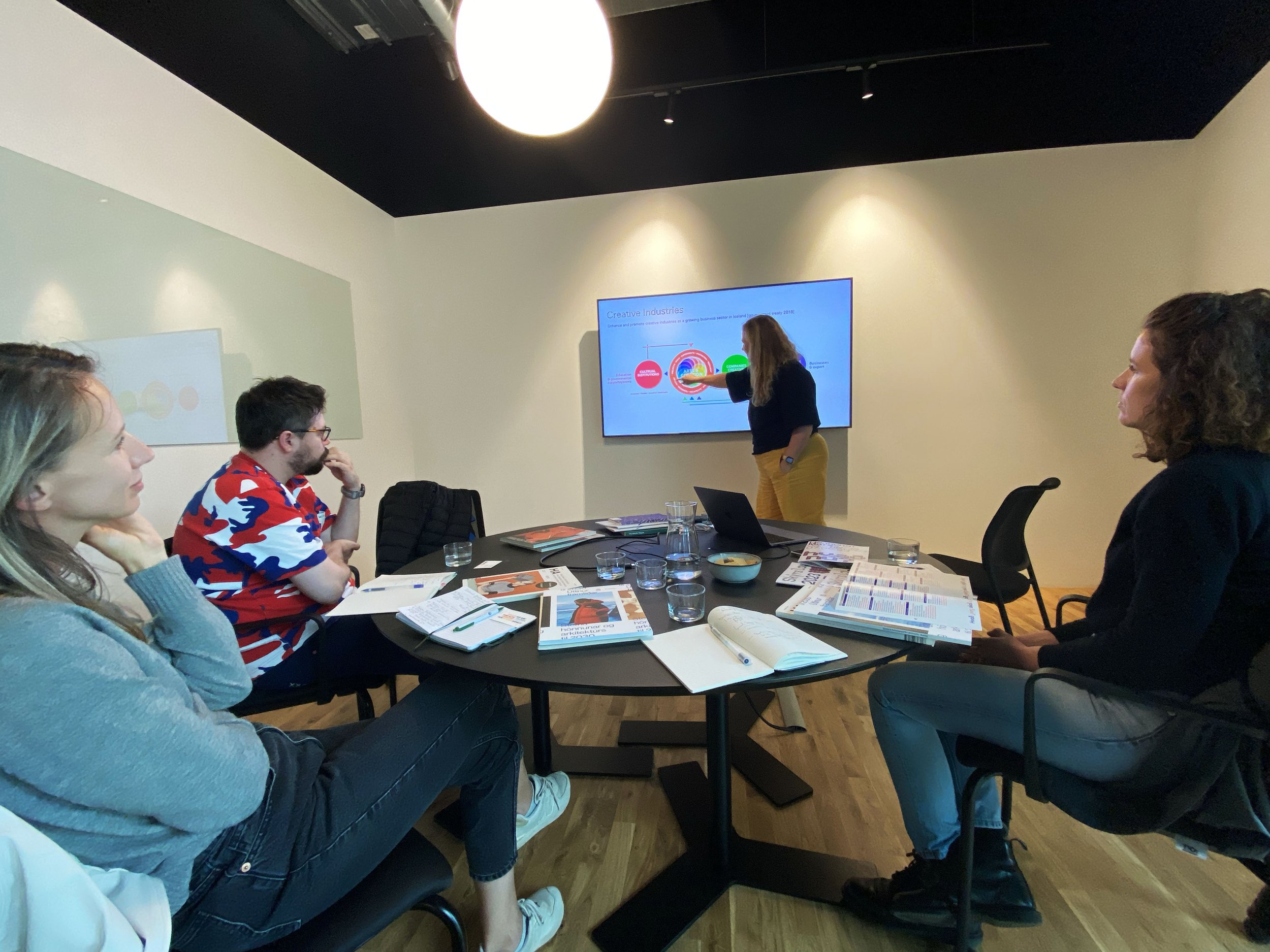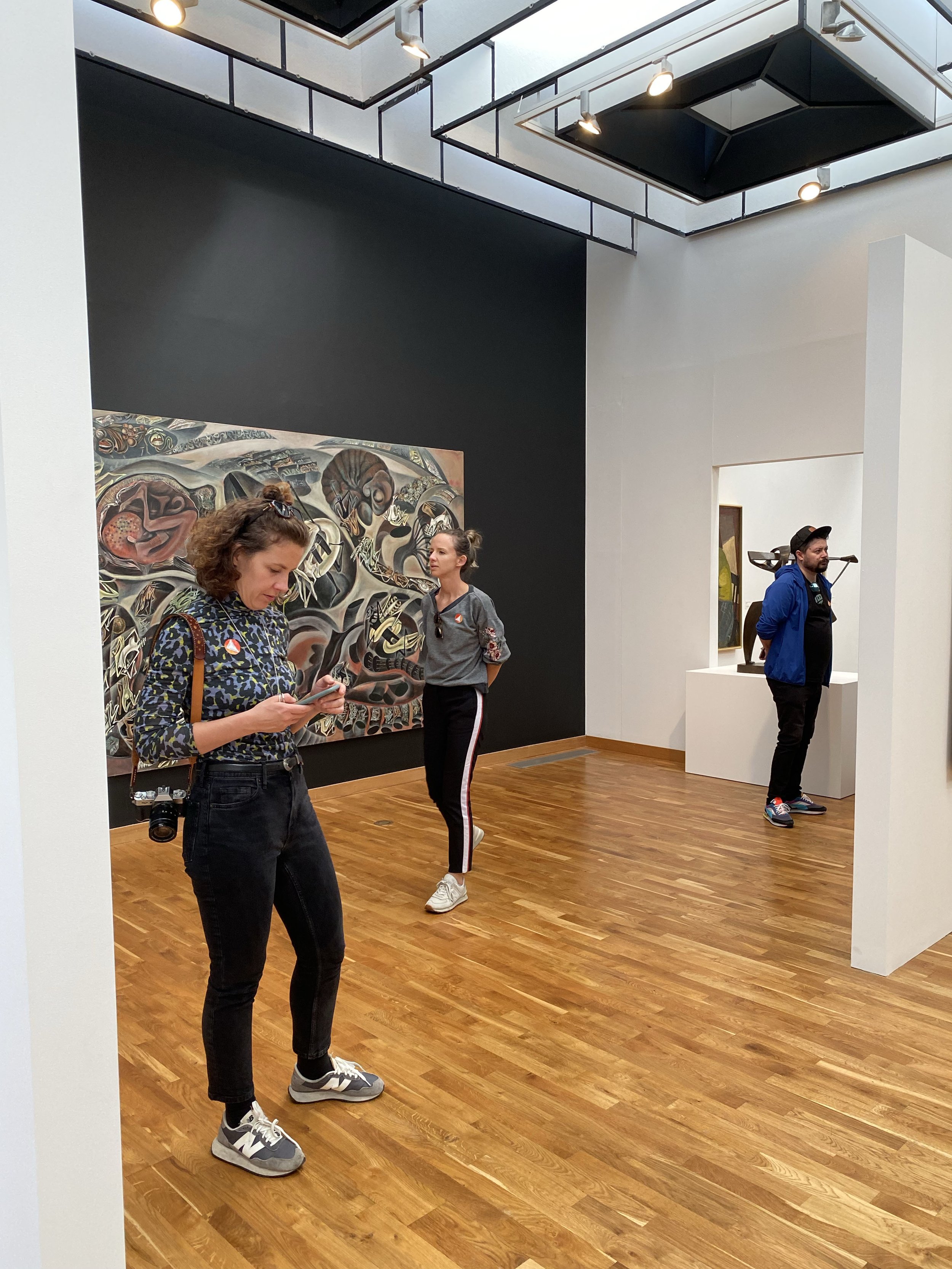Embarking on a journey to the land of fire and ice, our visit to Iceland was a quest to delve into the very heartbeat of a nation, to meet pioneers of innovation and creativity, nestled within its nonprofits, creative communities, and industries.
Our participation in the Active Citizens Fund under the EEA Financial Mechanism, funded by Iceland, Liechtenstein and Norway, took us to the island to explore how their unique experiences could be harnessed for crafting ingenious campaigns that spark change and ignite hearts. Over the course of a week, we probed potential partnerships, collaborations and learning opportunities with local nonprofits in the human rights and environmental sector as well as the established and emerging creative circles.
Meetup with Iceland’s human rights and environmental activists
On our first day, we met with our local partners the Icelandic Human Rights Centre, an independent organization that works to advance human rights through the promotion of research and education on and raising awareness of human rights issues in Iceland. Together, we hosted a meeting to connect with organisations working across Iceland on issues from LGBTIQ+ and women rights to refugees, disabilities, environmental protection and citizen engagement & democracy – including the Queer Alliance, Young Environmentalists, Disabilities Alliance, Women's Rights Association, and Hringsjá.
After a short presentation of our work at the intersection of art and human rights and environmental issues – including the sharing of a wealth of resources for nonprofits such as our unique formats that engage artists in society’s key challenges, as well as our platform for free socially-engaged art TheGreats.co – we delved into the challenges in front of organisations in Iceland. They shared their experience working on creative campaigns, the practice of engaging artists, noting that they hadn’t fully explored this approach, and discussed their desire to expand their audience engagement and communications in new directions.
Our meeting left us all brimming with ideas for future mutual collaborations on socially-engaged art projects and creative campaigns, and potential trainings, which we can’t wait to explore.
Tapping into the tech and ad minds of Iceland
Our visit also led us to connect with several tech companies in Iceland working with VR technologies. We spent an afternoon with Aldin, a pioneer in high-quality, believable reality experiences for people from all walks of life. Their goal is to leverage the unique power of the VR/AR medium and AI to inspire people to imagine new realities and experience things that have never been possible in history. They showcased the latest developments in the field, allowing us to do a live testing of their cornerstone game, and we discussed the possible applications of VR in social campaigns.
Next we met up with Gagarin, an Icelandic company that specializes in interactive multimedia and design. They provide services in areas such as exhibition design, interactive installations, multimedia production, and user experience design. Known for creating engaging and innovative experiences using technology, and design to convey information and tell stories, particularly around cultural heritage projects, together we explored avenues of combining our forces to create such experiences around human rights and environmental issues.
Gagarin impressed us with their intricate and unique approach of working, often involving extensive research and the set up of cross-disciplinary teams. Having worked with numerous institutions and organizations such as Amnesty International, they have created large-scale exhibition sites such as Klimahuset, a new museum for climate change in Norway, to digital campaigns such as Our Atmosphere, that features an animation on how we can all influence emission figures in the fight against climate change.
Visiting Iceland’s cultural institutions and galleries
On our following days, we submerged ourselves in the cultural scene to understand both the cultural landscape, the possibilities of engaging with Icelandic artists, and potential partnership areas.
Our first stop was the Icelandic Art Center, a prominent institution dedicated to supporting and promoting contemporary visual art in Iceland. It serves as a hub for artistic exploration, innovation, and collaboration, both within Iceland and on the international stage. The center plays a vital role in nurturing the country's art scene and facilitating connections between Icelandic artists and the global art community. Our hosts walked us through the new art policies in Iceland, opportunities for connecting with Icelandic artists and collaborating on producing artworks in Iceland and abroad, and engaging new and hard-to-reach audiences because “[the public] should be a part of it.”
In our next stop, we learned about the “if you can do it, I can do it” spirit of Icelanders with the Iceland Design and Architecture organization, which aims for progress in design and architecture in Iceland focusing on sustainable development. Its role is to facilitate and promote design of all kinds as a vital aspect of the future Icelandic society, economy and culture. We were vastly inspired by their key activities, including the running of the annual DesignMarch festival, which showcases the best local design alongside international names, their Design Prize, and Design Fund, which allocates grants to diverse projects in the field of design and architecture in Iceland. Finally, our hosts introduced us to powerful design initiatives that are accelerating the green transition through design, pushing for a low environmental footprint, and enabling the circularity of materials.
On top of all that, we also decided to explore Iceland’s incredible cultural scene, known for artists such as the singer and songwriter Bjork, large-scale installation artist Olafur Eliasson, and contemporary artist Ragnar Kjartansson. At the various venues of Reykjavík Art Museum, the leading art museum in Iceland, we were fortunate to get a glimpse of a number of outstanding exhibitions, including the Icelandic 20th Century Art exhibition, featuring artworks from its 20th century collection, as well as the third edition of Kaleidoscope: Icelandic 21st Century Art, featuring a collection of artworks from the Icelandic art scene in the last two decades, both by recognized artists of the time as well as the work of younger generation of artists. We also enjoyed several other exhibitions, including Cunning Scissors, powered by Erró, a visual artist, who is best known for his painted pop art collages of images from comic books and advertisements, and among the most prominent figures of the European avant-garde of the 1960s.
In addition, we made our way to the National Gallery of Iceland, the primary national art museum of Iceland whose collection comprises a diverse range of artworks, including paintings, sculptures, prints, and drawings, mainly created by Icelandic artists. There we viewed Glassrain, a 1984 installation, one of the first of Rúrí‘s many works that address the theme of time and menace.
As we crisscrossed Reykjavík, we also peeked into various spaces in the city – from Andrými, a radical social center and an open space for grassroot groups and individuals to meet and organise, to Mengi, a creative space in downtown Reykjavík curating weekly events focused on experimental art & music.
Connecting with the vibrant creative community
In our last days, we visited Bio Paradis, a gorgeous independent cinema that looks like something out of a Wes Anderson film, to connect with some of the members of Post-dreifing, an art collective, mostly made up of young artists, coming from different corners of the Reykjavík grassroots scene. The group's main goal is to build visibility and self-sufficiency for artists through collaboration. With nearly 50 artists and musicians making up the collective, they host an impressive annual festival in northern Iceland and regularly organise concerts and other activities, including supporting the refugee movement.
We also met up with the organizers of Fúsk – an ideal-driven laboratory, a creative platform, a community hub, a playground for creatives, and so many other things. In Icelandic, it translates to: ‘doing something even if you haven’t figured it all out yet,’ but probably not quite. Although they are at the moment searching for a new space, Elín Margot, Director of the Product Design program at the Iceland University of the Arts and an artist with a socially-engaged practice involving gender, food and activism, noted that they welcome projects that will feed and strengthen the community. In this role, she is also the Program Director of RUSL, a sustainable design festival focusing on circular thinking and its application within art, design and culture. At the end of our meeting, Elín took us on a tour of the university campus, alive with a diverse range of art studios and workshops.
These vibrant creative networks are all about transforming our community as well as how we work in the process. We were left inspired, thinking of new ways to engage local artists in our formats such as Labs, where we match artists and technologists to ideate solutions over the course of a weekend for our greatest social and environmental challenges.
Catching the last days of Pride in Iceland (also called Joy Parade), we got a glimpse of a Reykjavík that is loud and proud – adorned with rainbows around every corner, including at the city’s main church, alight with the hues of love, diversity, and boundless acceptance.
We look forward to what’s to come.

